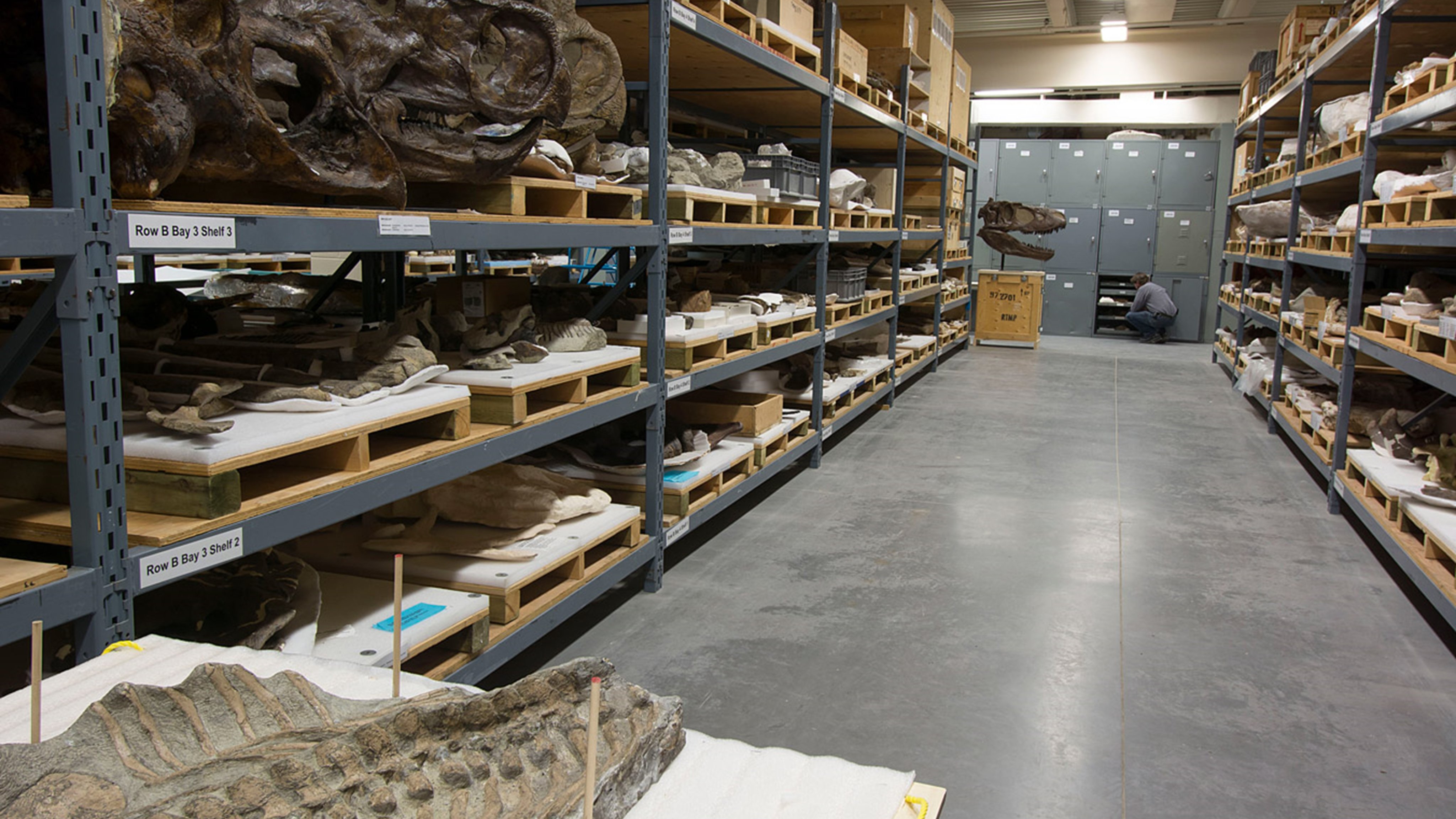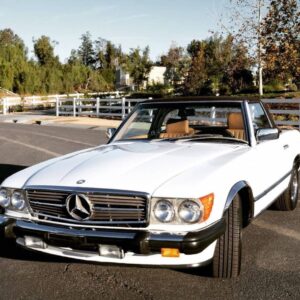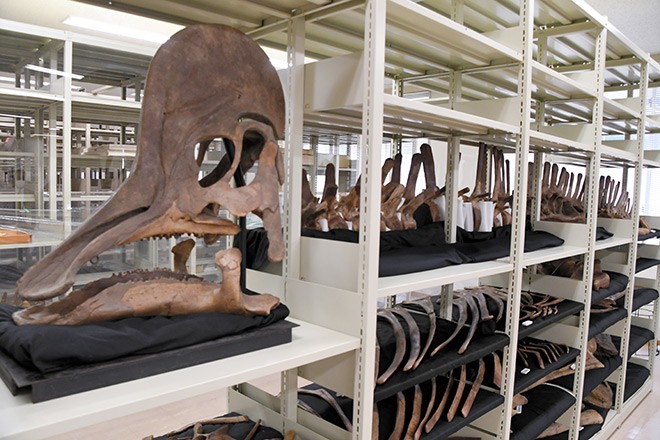
A U.S. fossil entrusted to a university museum here was from a Corythosaurus dinosaur, the first such specimen discovered outside of Canada, researchers said.
“The finding proved to be important for figuring out the distribution of Corythosaurus,” said Ryuji Takasaki, a researcher of vertebrate paleontology at the Okayama University of Science.

The university’s Museum of Dinosaur Research was put in charge of the fossil, which was unearthed from a farm in the U.S. state of Montana in 1989.
Almost all skeletal components from the head to the tail had been preserved in excellent condition.
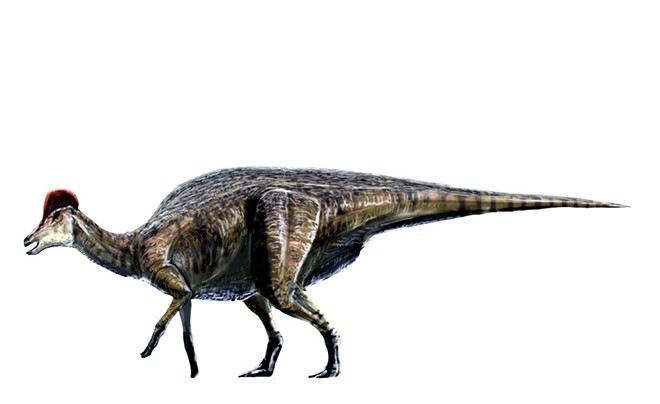
Fossilized remains of Corythosaurus had been found almost exclusively at Dinosaur Provincial Park in the western Canadian province of Alberta.
The park’s geological formation extends south across the border to Montana.
But no evidence of Corythosaurus living in the United States had been uncovered until now.
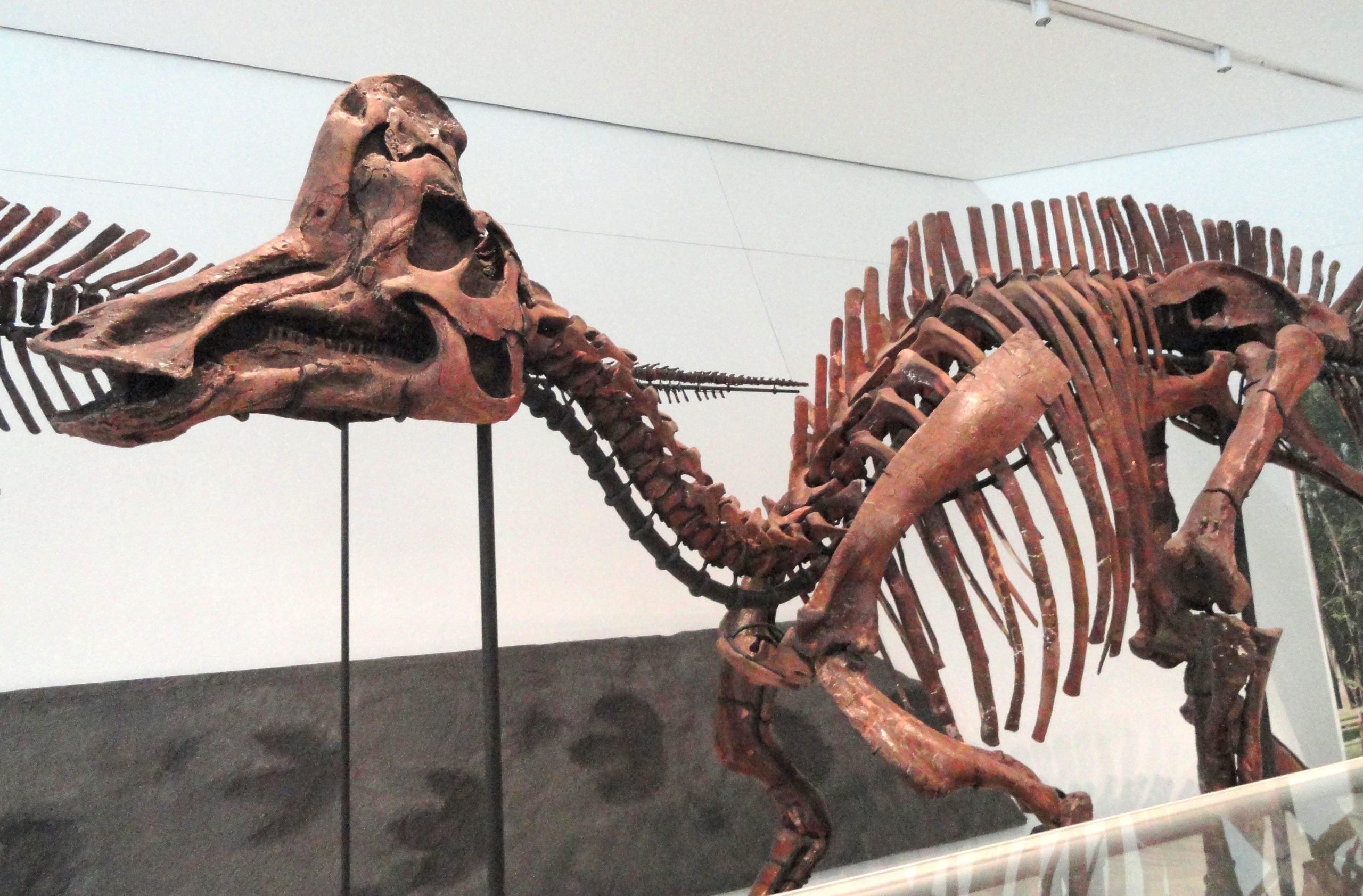
Corythosaurus, a “duck-billed” herbivore dating back 76 million years, appeared in large numbers during the latter half of the Cretaceous Period. The hadrosaur had an 8-meter-long body and a large round crest on its head.
One problem in identifying the fossil at the Okayama museum was that it did not have the characteristic crest.
The museum re-examined the broken pieces of the dinosaur kept in a storage room. Bone fragments forming part of a crest were found, and the specimen was identified as that of Corythosaurus.
“The discovery may help deepen the understanding of the ecosystem in that period,” said Kentaro Chiba, a lecturer of vertebrate paleontology at the university.
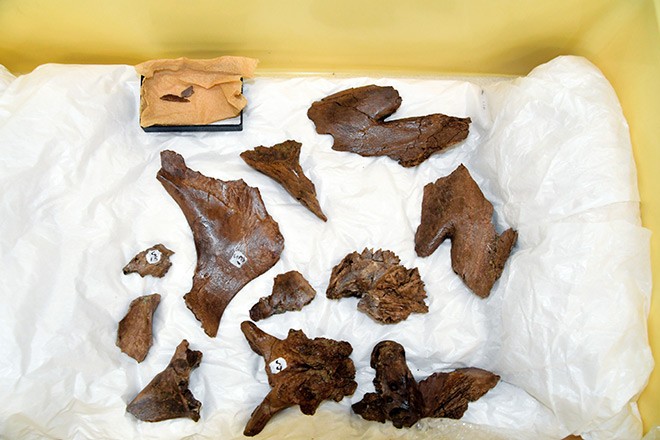
The Okayama University of Science was entrusted with fossilized samples, including the Corythosaurus, by the Hayashibara Museum of Natural Sciences in Okayama, which closed in 2015.
